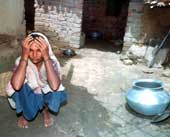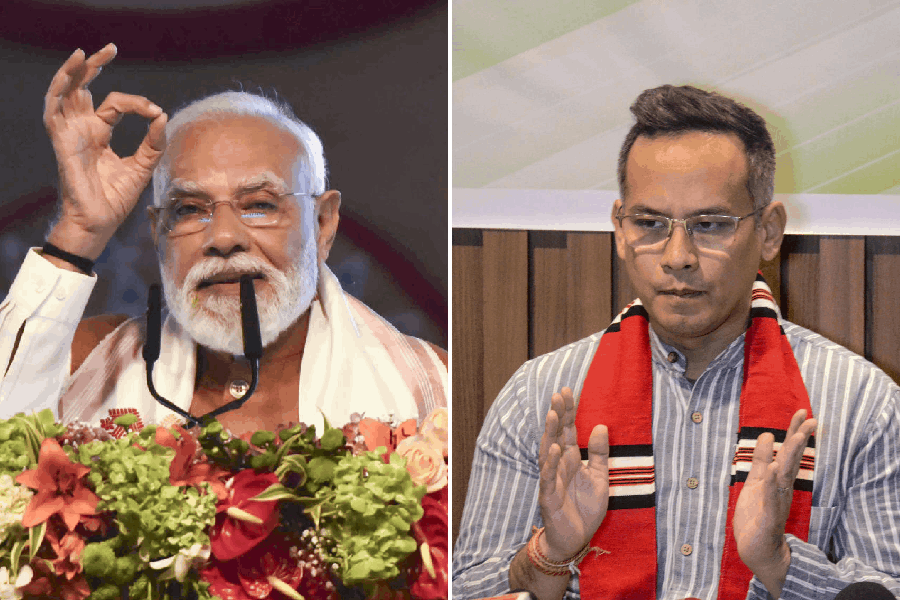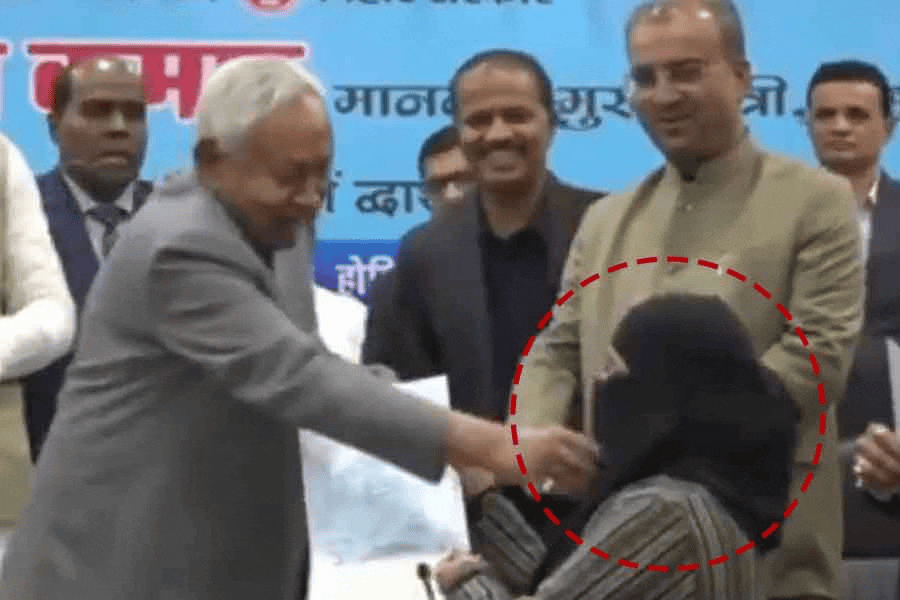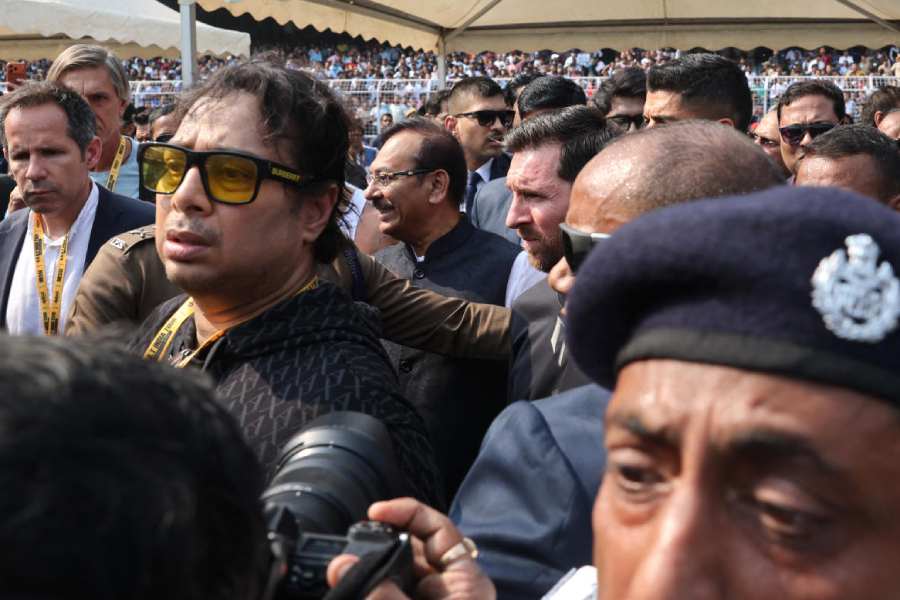|
|
| Cycle of pain, guilt and loss |
Does the ‘girl-child’ exist? What is it other than empty officialese, a smoke-screen that obscures, almost erases, little girls and the dismal little lives most of them lead? The ‘skewed sex-ratio’ has become a fetishized object for policymakers and governments in India, and improving those numbers a goal in itself. In the pursuit of good-looking sex-ratios, the minister for women and child development has come up with one alarming scheme after the other.
Earlier this year, Renuka Chowdhury announced a government scheme to open centres where people can abandon unwanted daughters rather than aborting them. Can you imagine the girl-children growing up in these doomed institutions? What fates can they expect, unwanted by their parents and kept on by the State only to boost sex-ratios? Chowdhury said at the time that the government was treating the drop in sex-ratio as an issue of national emergency. She also said that through this scheme, the government would “at least ensure that the gene pool is maintained”! In effect, these institutions would be collections of little girls unwanted by all but the census-takers, dropping by periodically to correct the skewed sex-ratio with a quick look at the office records.
As for the gene pool, what if these girl-children refuse to marry, or more likely, if no one marries them? Will the government step in then with appropriate fertilizing measures to ensure the genes are transmitted to the next generation? More likely, though, based on the experience of existing Nari Niketans, are the possibilities of sexual abuse, pregnancies and botched abortions on a scale the thought of which makes one’s heart clench.
And now the minister has announced a plan to make it mandatory to register all pregnancies, and to monitor abortions. A pilot project will be implemented by October this year in ten blocks with high malnutrition rates and skewed sex-ratio. Abortions will be permitted only for “valid and acceptable reasons”. What would these be? No answer yet, but it can’t be a comforting one. The slide from talking about preventing ‘female foeticide’ to preventing ‘foeticide’ itself, has been insidious and unnoticed in India.
The very term foeticide for abortion — the killing of the foetus, as if it is already a separate individual life — becomes the means by which the State can seize control over women’s bodies. Foeticide is an emotive word, used by the anti-abortion Christian right-wing in the United States of America. The term preferred by feminists is “abortion of a pregnancy” — notice how this term prioritizes the pregnant woman as the subject of the sentence. However, ‘foeticide’ has come to replace ‘abortion’ in the context of sex-selective abortion in India, in media reports as well as in government statements, without a thought to its implications. Of course, sex-determination tests should be monitored strictly, to the extent possible, and the culprits prosecuted vigorously. But it is quite another thing to monitor abortions themselves. Whatever the limitations of the former, the dangers of the latter are far greater.
Feminists in other countries still struggle against religious orthodoxies to make abortion legal and safe, while in India the Medical Termination of Pregnancy Act was passed with little opposition in 1971. However, it was purely a population-control measure, not a recognition of women’s rights over their bodies and lives. The debate in parliament during its passage reveals, underlying it, extremely patriarchal and statist assumptions of control over women’s bodies. Nevertheless, despite its many limitations, the act does enable women to get abortions legally. With this new move that would, according to Chowdhury, “make mysterious abortions difficult”, a crucial area of control over our bodies may be taken away from us.
Most women in India have no control over the conditions in which they have sex, and abortion becomes the only form of birth-control. Think of those women who become pregnant through contraception failure, and have abortions because of the stigma of illegitimacy, or because they cannot afford another child, or because they are at a stage in their careers or their lives where they cannot take on the responsibility for yet another human life. What if the rationale behind these grounds remains “mysterious” to the powers-that-be?
Where society lays the entire responsibility for child-care on the woman, the woman should have the final say on whether she is ready to take on that responsibility. (By the way, recently the Delhi high court was pressured by a PIL to set up crèches for ‘women lawyers’. The sexual division of labour is set in stone — apparently male lawyers do not have children, only women lawyers do. But of course, in a situation where even women’s colleges with all-women faculties do not offer child-care facilities, it is a welcome move.)
The pregnant body is not two individuals with equal rights, it is a unique entity incomprehensible to modern political theory — a life within a life, but one life parasitic on the other. Where children are seen in the abstract as national resources, but concretely must be taken care of on a day-to-day, minute-to-minute basis by their mothers, the host body of the mother acquires the right to decide its fate.
This is why the access to safe and legal abortion should not be defended as a right of privacy. Although it is a decision taken by individual women, that decision is shaped and driven by public and social arrangements and limitations — indeed, by a collective failure of social responsibility. Above all, it is worth stating unequivocally that the decision to abort a pregnancy is never, ever, taken without pain and guilt, and an enormous sense of loss.
It is true that many women go in for sex-selective abortion under pressure from their husbands’ families — it is not a ‘choice’ they willingly make. But when is abortion a willingly made positive choice? It is, under all circumstances, a difficult decision taken in the face of other more unbearable options. And every one of those circumstances has to do with a patriarchal society and a patriarchal family structure. So why is women’s condition of helplessness in the family not the real issue? It was only as late as a year ago that the Domestic Violence Act was passed, giving women the right to live in the marital home after the break-up of a marriage, and even this right was recently limited by the Supreme Court in a judgment that limited the definition of “marital home”. The Hindu Succession Act was amended only in 2005 to give daughters equal rights to ancestral property. The family and the institution of marriage are at the root of the oppression of women, and unless these are opened up and radically reconstructed, no amount of monitoring and punitive measures will result in changing women’s lives.
Of course, people courageous enough to defy the patriarchal heterosexual family very often put their very lives at stake. Lesbian women, homosexual men, people who refuse to fit sexual relationships into marriage, who marry into the wrong caste or community, single women — do we not know how they struggle to make meaningful lives, sometimes just to live? Yet, how many of these would endorse or go in for sex-selective abortion? Probably none.
What is the real issue? Skewed sex-ratios, an embarrassment for the ‘emerging world power’ on the global stage? It would seem so from initiatives of the sort put forward by Chowdhury, where the real concern is statistics, not the lives of women. But what if the real issue is the fact that women are considered valueless and expendable, often by women themselves, correctly assessing the worth of a woman’s life on the basis of their own experience? Then there is no quick fix.
An ideal feminist world would not be one in which abortions are free and common, but one in which the circumstances that make pregnancies unwanted have been transformed. Until then, in a hugely imperfect and unfair and sexist world, we must protect women’s access to legal and safe abortions whenever they decide to have them — whatever the reason for their decision.












